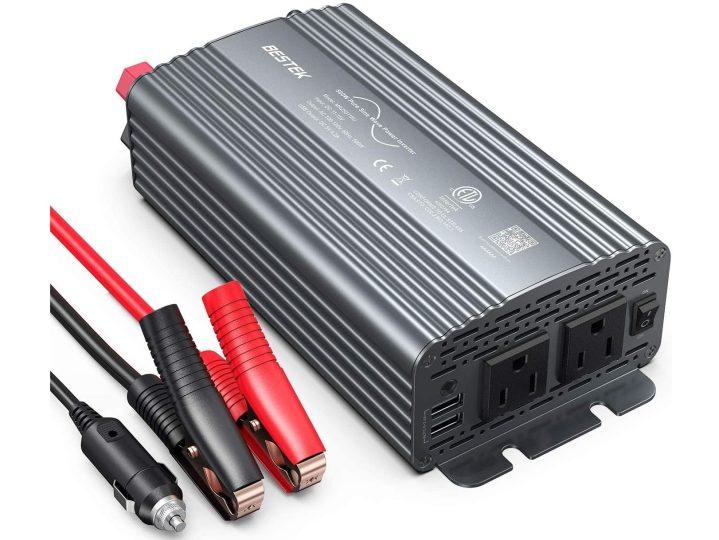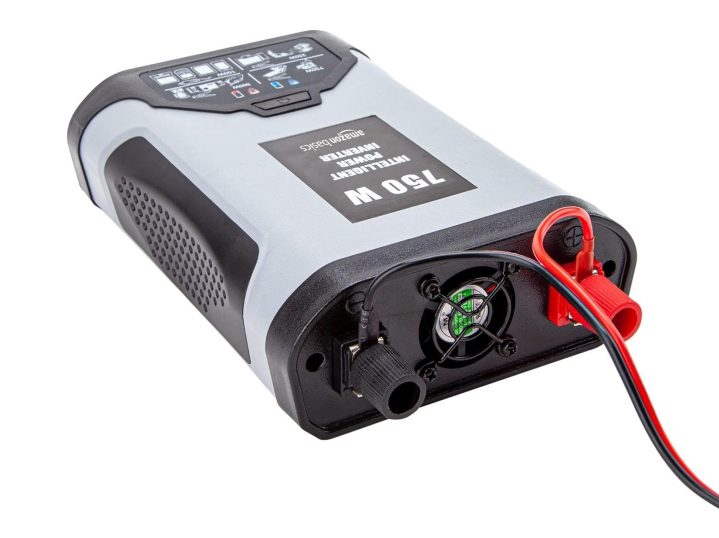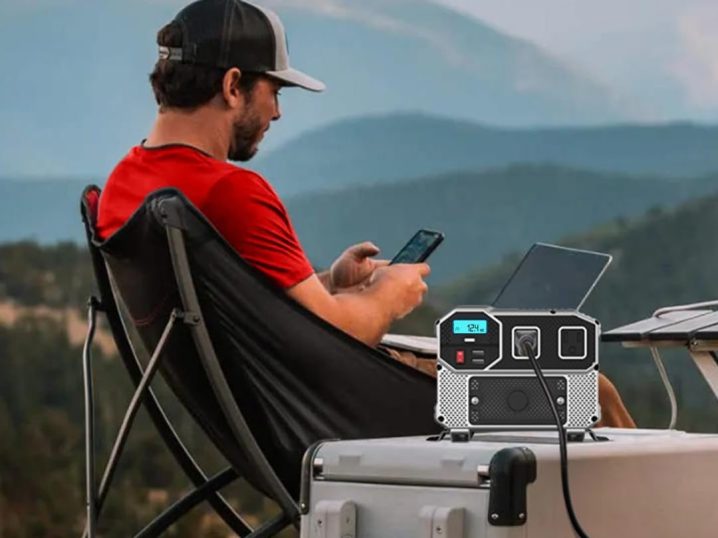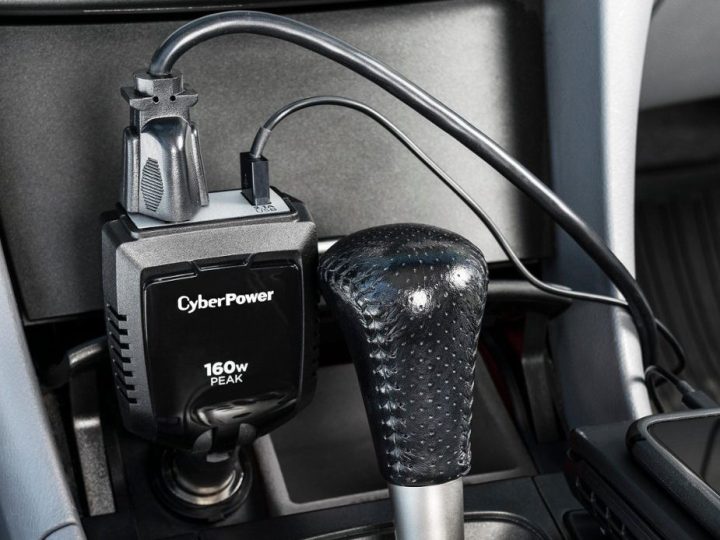Whether there’s a power outage locally or you’re driving to a remote location, sometimes we just need portable power. While you could lug around one of the best portable power stations to get your remote electricity fix, your best bet may be one of the best portable power inverters instead. These devices draw energy directly from your car’s battery, giving you accessibility to power without needing to carry around a very heavy battery, charge it, or any of the other hassles associated with portable energy. If you have a car, you’re ready to use a portable power inverter.
The best portable power inverters of 2024
The following portable power inverters span a large range of models, port types, and wattages. Check them out here based on a brief recommendation or continue on for a more detailed analysis.
- Buy the
if you want the best power inverter for most people. - Buy the
for a solid upgrade. - Buy the
power inverter for a small but reliable pick. - Buy the
power inverter for your high-powered needs. - Buy the
if you want something to plug into the inside of your car during travel.
Bestek 500W
Best for most people

| Pros | Cons |
| Perfect price point | No USB-C |
| Temperature, voltage, and short circuit monitoring | |
| Highly versatile | |
| ETL listed for safety |
If you want a versatile power inverter that you can use for the most commonly sought after entertainment items and more, check out the Bestek 500W. It has a solid construction, straightforward usage mode, and slim body. At only 2.2 pounds and a size of 8.7 x 4.3 x 2.4 inches, you can easily take it with you anywhere you go.
We really like the versatility the Bestek 500W gives for its price point, including quality clamps for your battery alongside a cigarette-lighter plugin for the interior of your car. You won’t want to use the cigarette lighter option all of the time if you own the Bestek, however. This is because it cannot draw as much power as the direct-to-battery option. Plus, if you want to use a cigarette-lighter only device, you can find much better options elsewhere on the list. Use the Bestek 500W if you want versatility.
You’ll notice that the Bestek 500W has a power switch. This turns off the two outlet ports, but not the USB-A ones. The reasoning behind this is simple — USB-A ports take little to no power. Plus, within the Bestek’s protections package, there are protections for your battery’s power level. In other words, unless something goes seriously wrong, you’re going to be able to get your car started after using the Bestek 500W. And, while we’re on the topic of safety, the Bestek 500W has an ETL listing for safety, meaning it has passed stringent third-party safety requirements applicable in the US for safety.
| Key Specifications | |
| Wattage | 500 |
| Ports | 2 outlet, 2 USB-A |
Renogy 1000W
Best upgrade

| Pros | Cons |
| Great power for price | No cigarette-lighter option |
| Temperature, voltage, and short circuit monitoring | |
| ETL listed for safety |
For 1000W of power, with which you can use for more powerful applications, check out the Renogy 1000W. It runs 1000W at base level, but can take surges up to double that when you want to use something with variable power usage modes (think a heater that kicks on and off). In many ways it has more advanced options, with a wider system that allows you to connect solar panels and a wired remote system that may be more involved than you want to get involved with right away. But they are there to explore if you want them. Many customers of the Renogy also like to use it with a battery that is outside of their car. Beyond convenience, one reason for this is how many types of battery the Renogy assures us it is compatible with, including LI, SLD, GEL, FLD, and AGM batteries.
| Key Specifications | |
| Wattage | 1000W continuous, 2000W peak |
| Ports | 2 outlet, 1 USB-A |
Amazon Basics 750W
Reliable alternative

| Pros | Cons |
| Automatic shut-off for low/high voltage situations | Included cables short, but you can sub in your own |
| Slim size (2.2 inches tall) | |
| Cigarette-lighter option | |
| ETL listed for safety |
If you’re a big Amazon shopper, you’ll know that the Amazon Basics line of goods are often anything but “basic” and come with high standards of service and quality. Their 750W power inverter is no different, which serves as a good alternative pick. It features automatic shut-off and an ETL listing, meaning it is both safe for your battery’s power level and your overall safety.
One thing we particularly like about this power inverter is its slim size, 8.3 x 5.2 x 2.2 inches. This means you can slide it under your seat or toss it in the glove box. You’ll particularly like this if you intend to use the cigarette lighter connection during your travels, which is capable of delivering around 100W of power.
We do somewhat fear that you’ll end up using this cigarette lighter mode more than the battery attachment mode, as the included cables are somewhat on the short end of the size spectrum. If you want to use the Amazon Basics 750W to its fullest, grab a longer pair of battery attachment cables, as the included ones are of the detachable sort.
| Key Specifications | |
| Wattage | 750 |
| Ports | 2 outlet, 1 USB-A |
Energizer 4000W
Best for high-powered appliances

| Pros | Cons |
| Clear LCD status display | Expensive |
| Up to 8000W peak power | |
| 3-foot power cables included | |
| ETL / UL listed for safety |
The Energizer 4000W power inverter is the most powerful power inverter you’ll find from a reputable brand. Its 4000W standard operating rate, followed by an 8000W for peak performances, will allow you to run heavy-duty equipment, and considerably more objects at the same time than most other power inverters on this list. We particularly like it for its LCD display, which shows the status of your battery and the inverter, taking a lot of mystery out of the process. Additionally, the Energizer is ETL listed, giving it that extra safety boost.
To give you an idea of what you can do with 4000W, just look at the these air fryers. The Cuisinart Convection Toaster Over Air Fryer uses 1800W of power, meaning that you can use it, a TV, and plug in your phones to this inverter and turn out okay. At the end of the day, this best portable power inverter for those of you that need more than a charger for your electronics devices and, instead, want some intensity. It is, however, more expensive on the other items in this list.
| Key Specifications | |
| Wattage | 4000 continuous, 8000 peak |
| Ports | 2 outlet, 2 USB-A |
CyberPower 160W
Best in-car power inverter

| Pros | Cons |
| Very compact | Can create tight spaces |
| Built-in surge protection | Outlet won’t power everything |
| 2-year warranty |
CyberPower’s 160W peak is a perfect power inverter if you just want something to keep your laptop, or other small electronic device, charging while you commute. It’s got a small, swiveling head that fits into your cigarette lighter, providing about 100W of power (the 160W of the title is the peak it can handle). In other words, this power inverter is not designed to handle everything, rather just the small things you might need in the interior of your car while driving.
The main advantage and disadvantage of this power inverter, oddly enough, is its size. At 3.2 x 3.9 x 2.5 inches and weighing in at 0.3 pounds, you can throw the CyberPower 160W into just about any backpack, purse, or laptop case you can think of or even just leave it in your glovebox. At the same time, despite its ability to swivel at 150-degrees about its head, there is still the possibility of a somewhat tight fight around your gearshift. Consider the layout of your car and your needs before purchasing.
| Key Specifications | |
| Wattage | 100W continuous, 160W peak |
| Ports | 1 outlet, 1 USB-A |
How we chose these portable power inverters
The preceding power inverters were largely chosen due to their ability to quickly be thrown in the car and carried until needed. Of course, other factors mattered too. As with all products covered by Digital Trends, technical specifications, our knowledge of typical pricing guidelines, and general consumer sentiment towards the product were considered. This being said, power inverters are more complex than they first appear, and many factors must be considered before selecting one.
Some highlights in our thinking process include coverage of the following points:
Wattage
The best power inverters are not necessarily the ones with the highest wattage, but they do tend to run that way. In reality, the considerations of what makes for the optimum wattage in a power inverter is no simple task.
If your wattage is too low for the task at hand, your devices may not run or your power inverter may simply break down and overheat. It’s worth noting that power inverters are not perfectly efficient, so you should always aim for a wattage that will give you a buffer over what you really need.
As a result, most of the time, having a wattage that is too high is a good problem to have. That being said, the inconsistent efficiency of portable power inverters once again comes into question. If a device can draw more power, it very well might. It might sound silly, but the extra power allowance of a high-wattage power inverter can get you to act sloppy with your power conservation, draining battery faster. Many of the best portable power inverters will have low voltage or low battery detection for automatic shut-off.
How much wattage should you get? Aim for a wattage that makes sense for your needs and then exceed it by at least 100W or so. Use the following wattages as guidelines:
- For USB, a USB 3.0 device will use under 10W max, while certain types of USB-C can use up to 250W.
- Official power adapters for iPhones use up to 20W.
- The
(one of the year’s best TVs) takes 444W. Expect TVs to take between 200 and 600W, depending on size, energy rating, and other factors.
If you’re paranoid about killing your car battery from using a portable power inverter or a power inverter malfunction, check out these portable jump starters to ensure your ability to get back on the road.
Connection types
How do you connect a power inverter to your battery? For the best portable power inverters, there are a couple of standard ways. One is to connect the inverter directly to your battery, much in the same way that you connect jumper cables to it. If you mostly plan on using your power inverter while stopped and want to use something like a TV or monitor with your power inverter, this is the best way to connect to your power inverter. The reasoning is simple, the car’s battery is able to produce quite a bit of power.
You will also find portable power inverters that can connect to the cigarette-lighter. This connection method is very convenient and can be used even while you are driving, but has a disadvantage of being limited by the amount of wattage your cigarette-lighter will supply, which is typically going to be less than 200W.
Many of the best portable power inverters have both direct battery connections and cigarette-lighter options.
Cable length
This factor is considerably simpler. While your connected devices will have their own cables, you shouldn’t neglect the cable length of the power inverter itself, especially on ones that connect to the battery directly in the manner of jumper cables. as you won’t want it to be stuck on heated elements of your motor. Ideally, a power inverter should be able to run up and out of the car, preferably sitting on a portable table. Luckily, even if included cables are short, most are able to be replaced by longer ones.
Safety listings
A majority of the power inverters above are ETL listed for safety. This, alongside a UL listing, means that the product passed a set standard for safety and performance as measured by a third party organization. An overview of the UL requirements for inverters will, for all practical purposes, give you an idea of what it means to be ETL listed as well, as the regulating bodies are closely related.
Note that you are more likely to find these sorts of listings on more advanced power inverters. For a small device that you connect to your cigarette lighter, it might not really be worth it in the minds of the manufacturer to go through the trouble of getting it listed. Not having an ETL or UL listing doesn’t mean that a product is unsafe — especially if there are thousands of raving reviews of it online — but these safety ratings are a good step towards greater peace of mind.
This article is managed and created separately from the Digital Trends Editorial team.
Editors’ Recommendations

